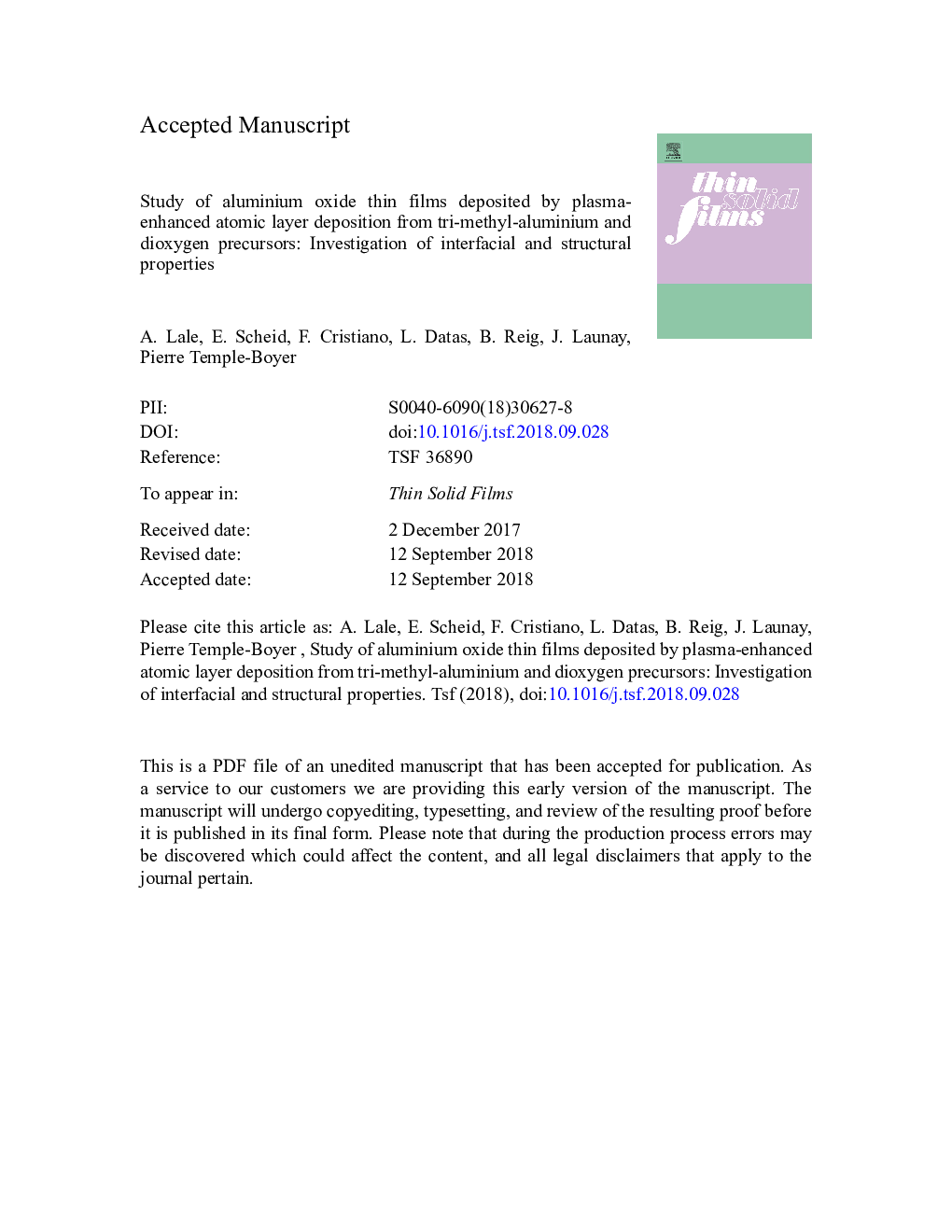| Article ID | Journal | Published Year | Pages | File Type |
|---|---|---|---|---|
| 10156113 | Thin Solid Films | 2018 | 35 Pages |
Abstract
Aluminium oxide (Al2O3) films were deposited on silicon substrates using plasma-enhanced atomic layer deposition (PE-ALD) technique with tri-methyl-aluminium TMA (Al(CH3)3) and dioxygen (O2) as precursors. PE-ALD experiments were performed in order to (i) investigate the interfacial properties between the silicon substrate and the alumina layer, and (ii) understand the impact of growth and crystallization phenomena on the Al2O3 films properties (structural, optical, mechanical, dielectric and etch). The formation of oxide-based transition layers, either silicon oxide SiO2 and/or aluminosilicate AlxSiyO, was evidenced for the TMA/O2 PE-ALD process. Based on these results, it appears that no substrate-enhanced growth occurs at the early stages of the growth process, as assumed in previous reports. Thus, constant growth rate (0.08â¯nm per cycle) and refractive index (1.64 at a 450â¯nm wavelength) were obtained for the Al2O3 layer deposited at 300â¯Â°C. Finally, thermal annealing experiments were performed on these films, evidencing the influences of atomic structural rearrangement and crystallization on the Al2O3 film main characteristics: interface steepness, atomic structure, refractive index, residual stress, dielectric constant and etch rate.
Keywords
Related Topics
Physical Sciences and Engineering
Materials Science
Nanotechnology
Authors
Ahmet Lale, Emmanuel Scheid, Fuccio Cristiano, Lucien Datas, Benjamin Reig, Jérome Launay, Pierre Temple-Boyer,
